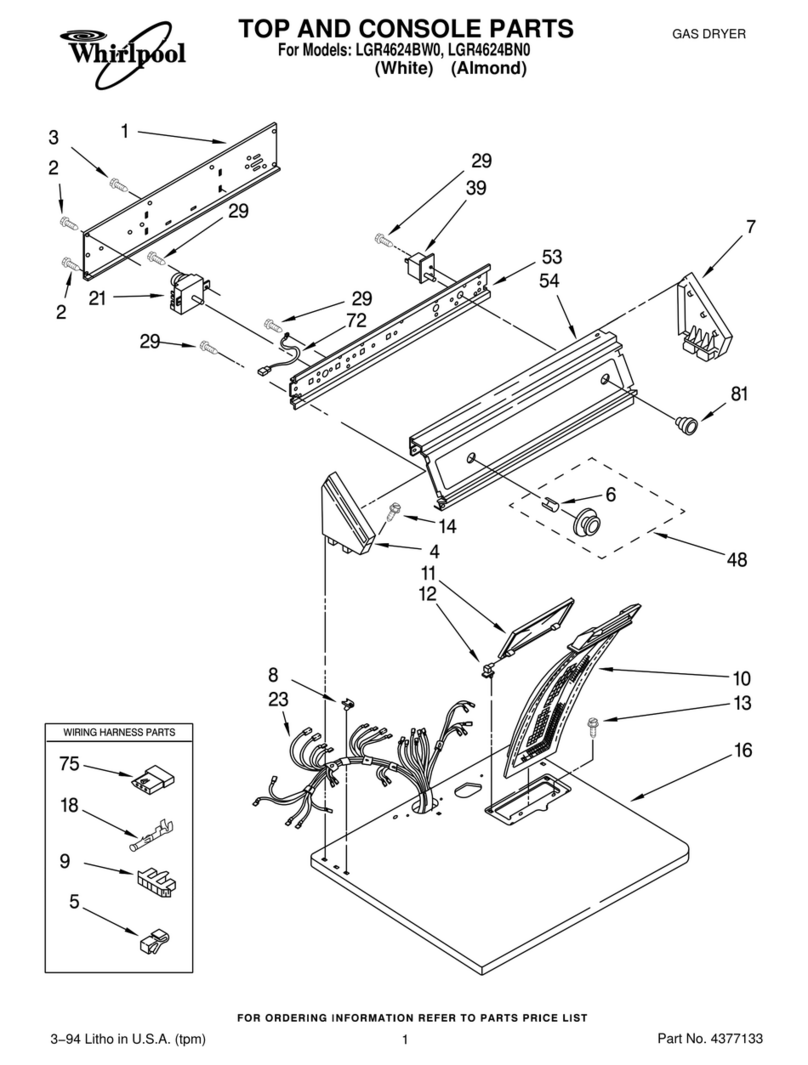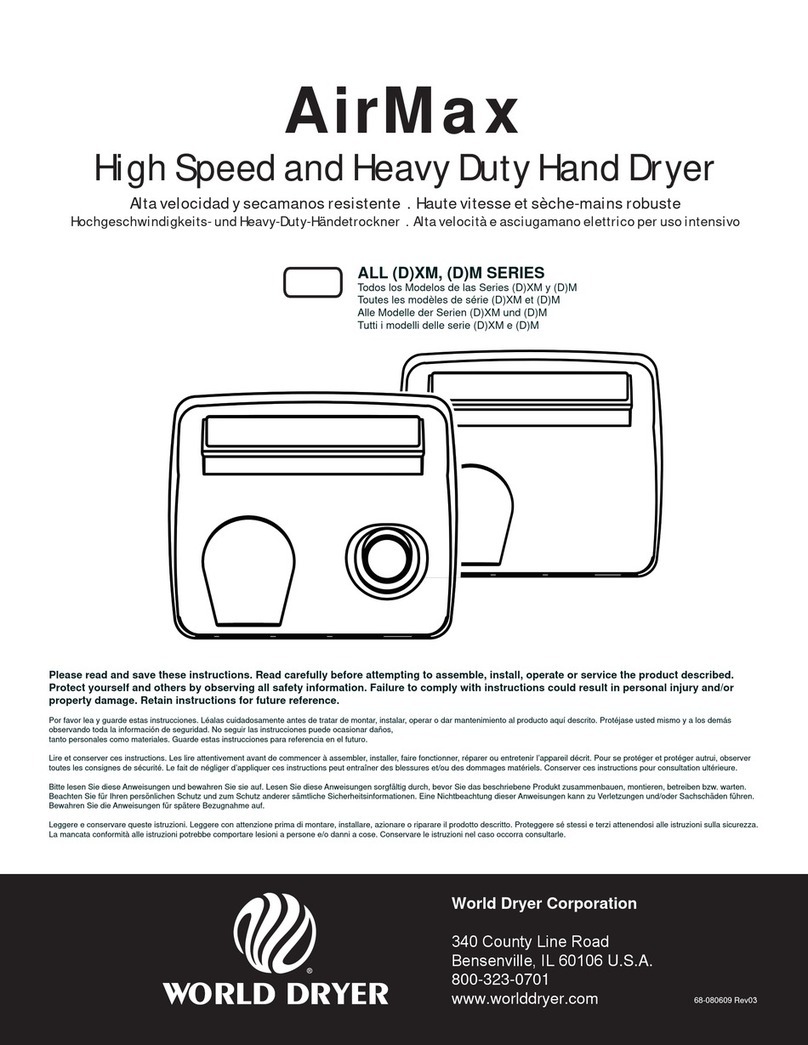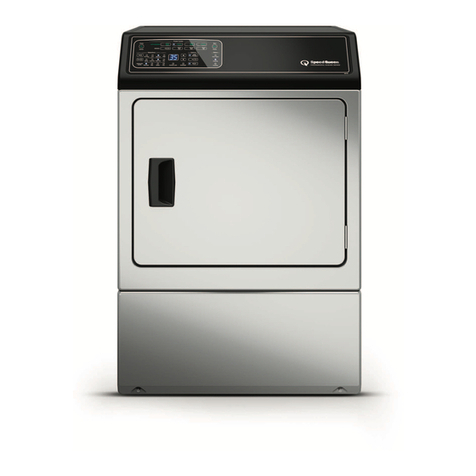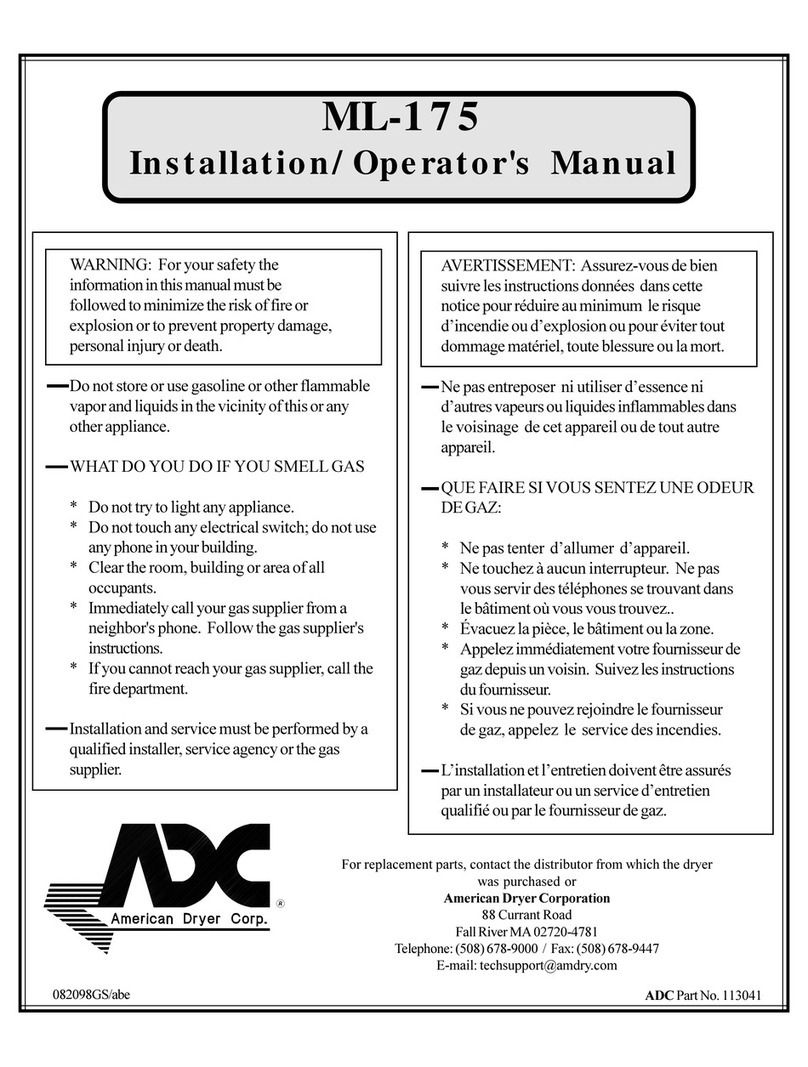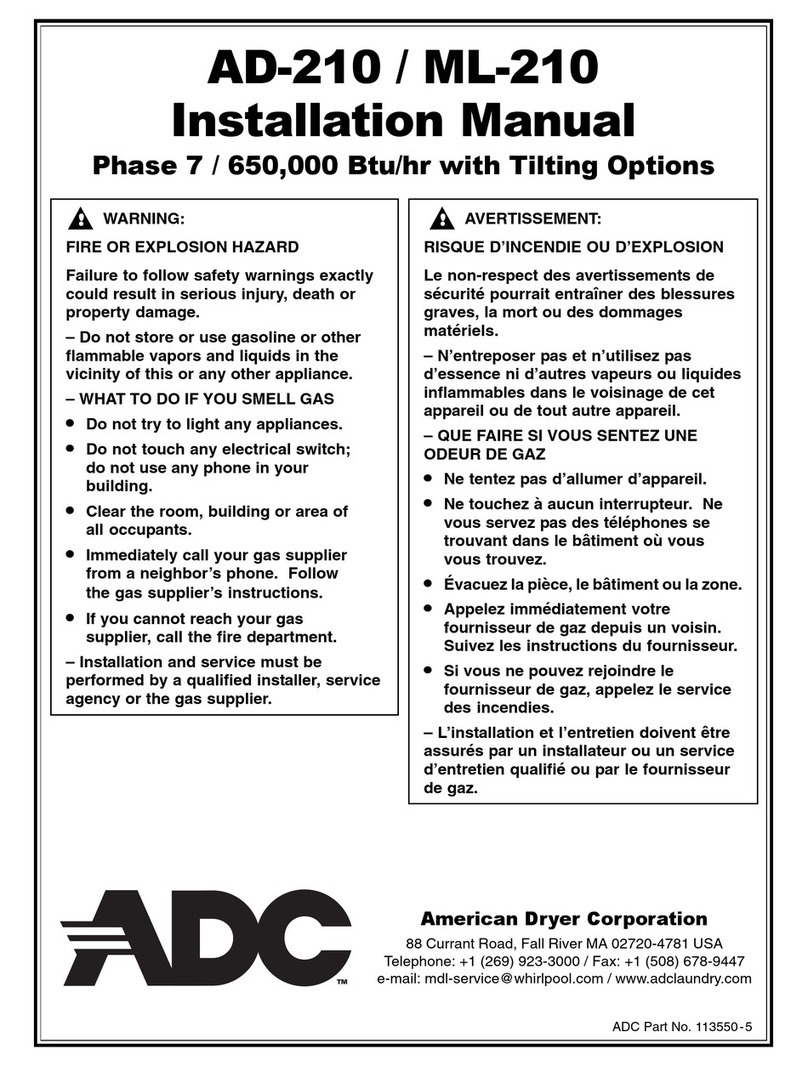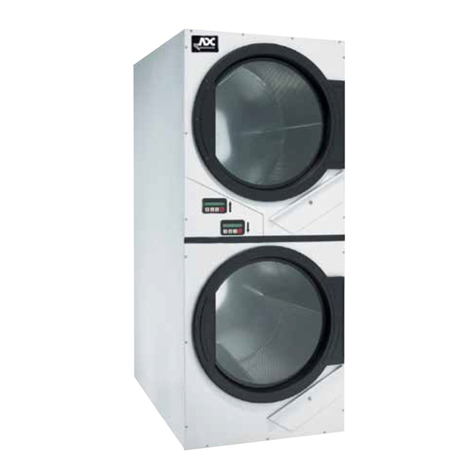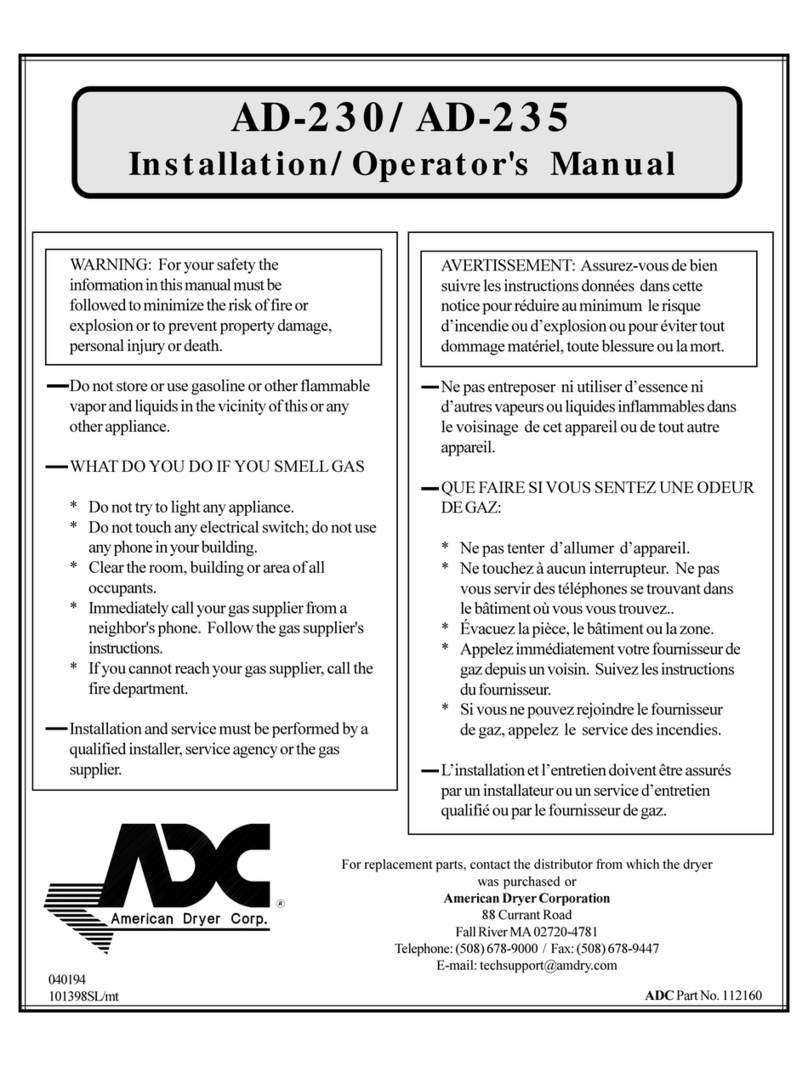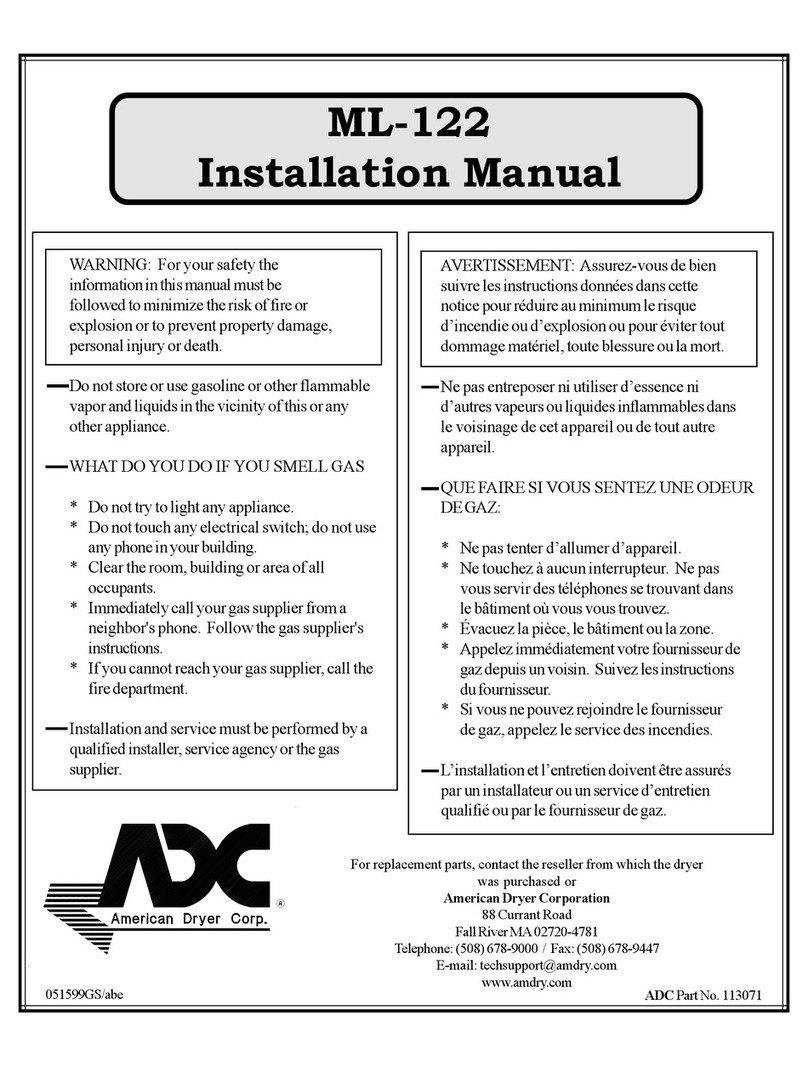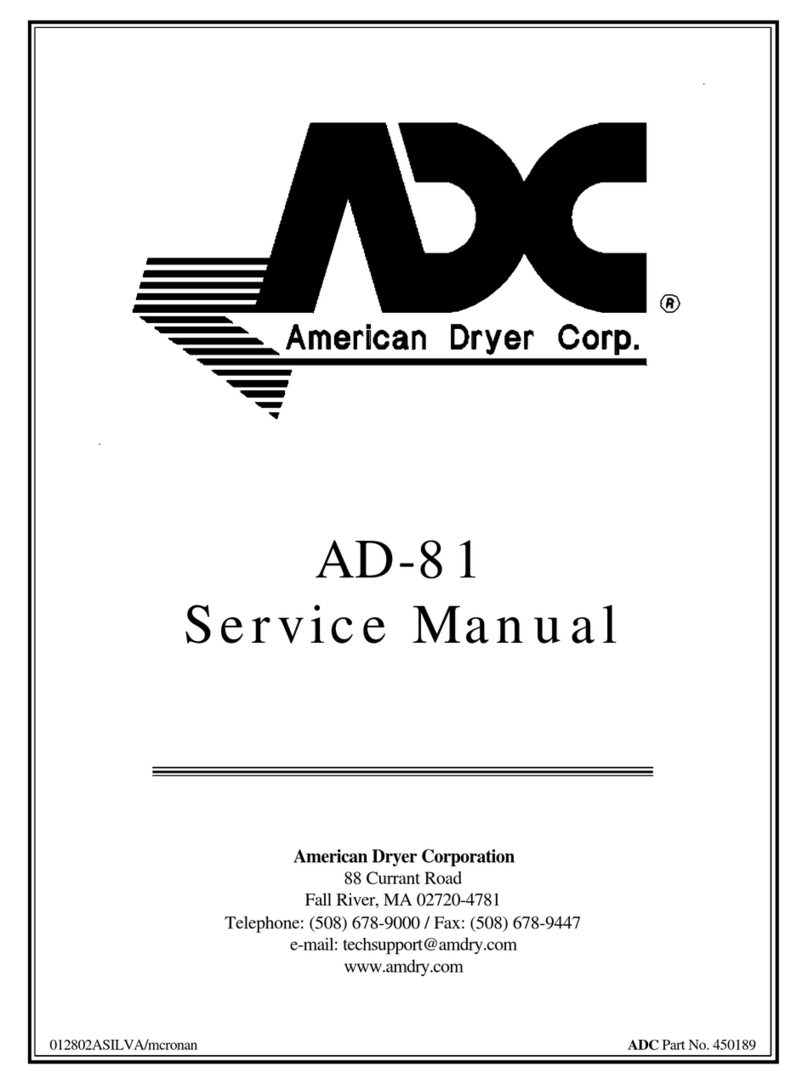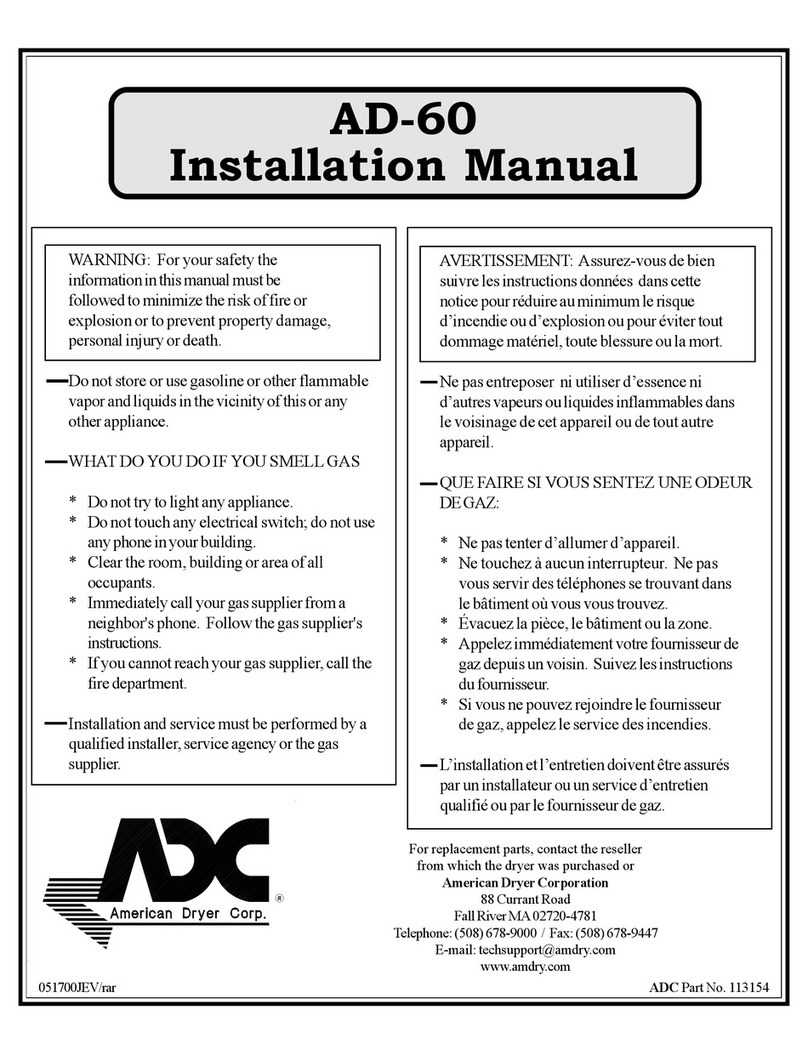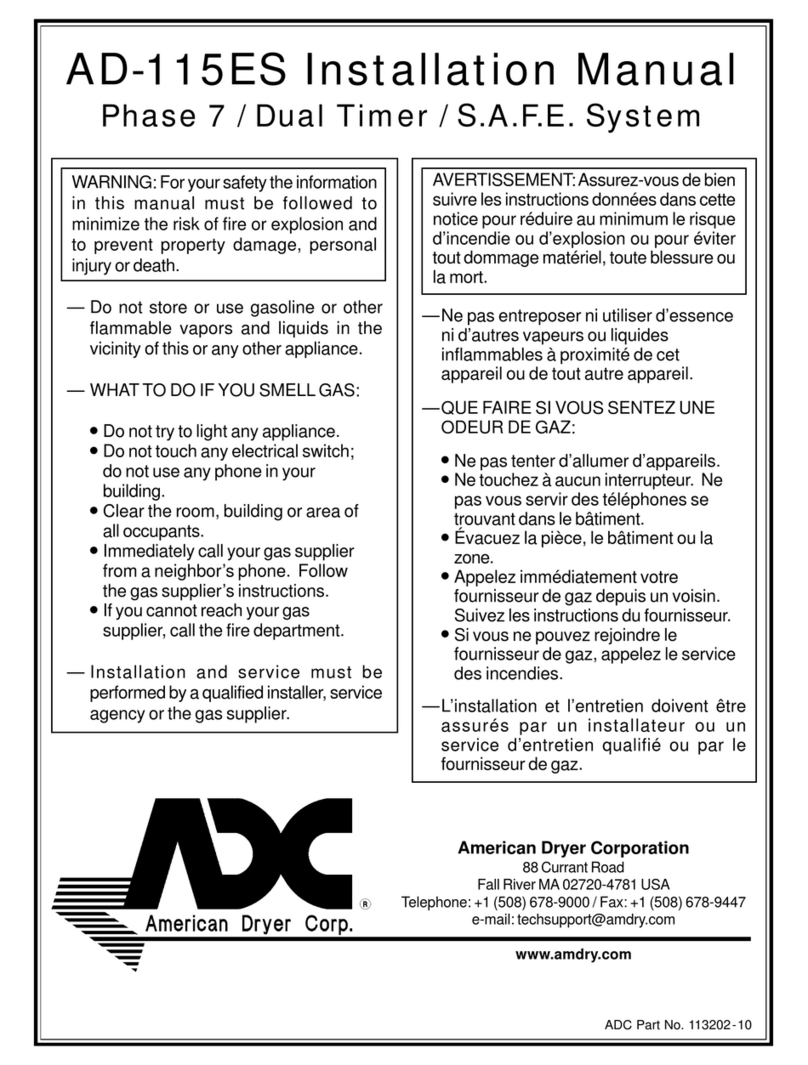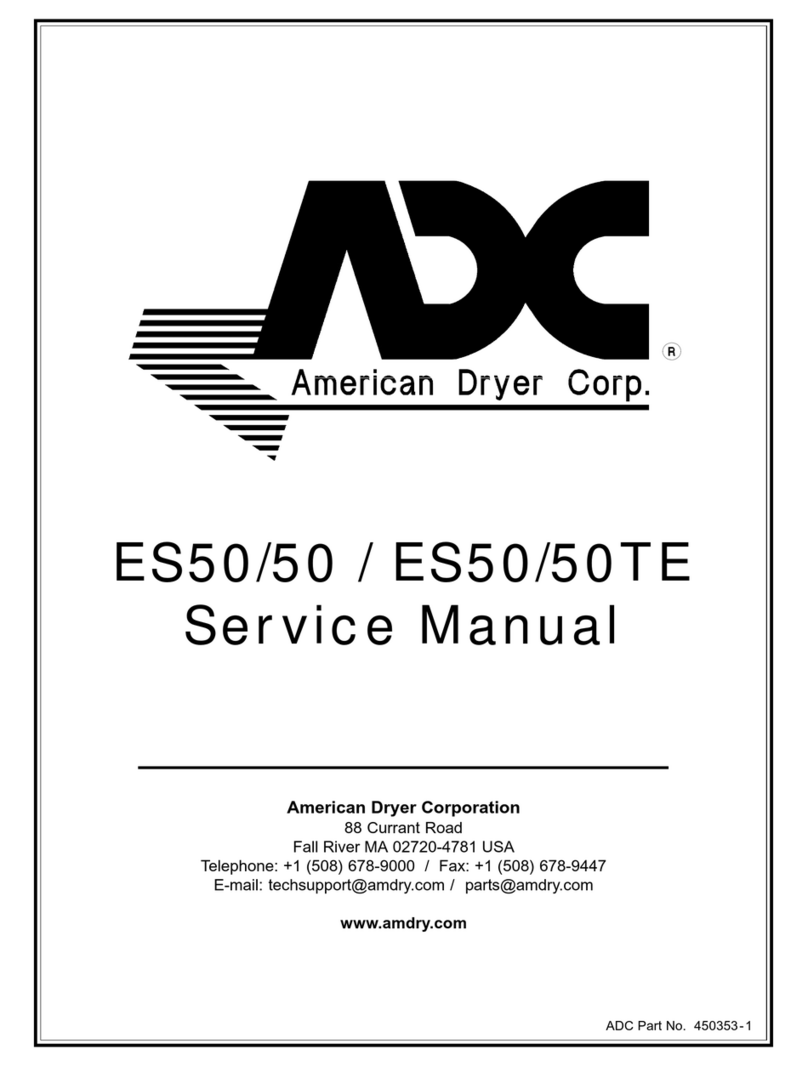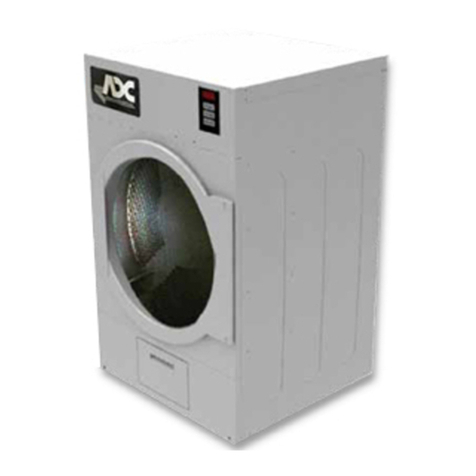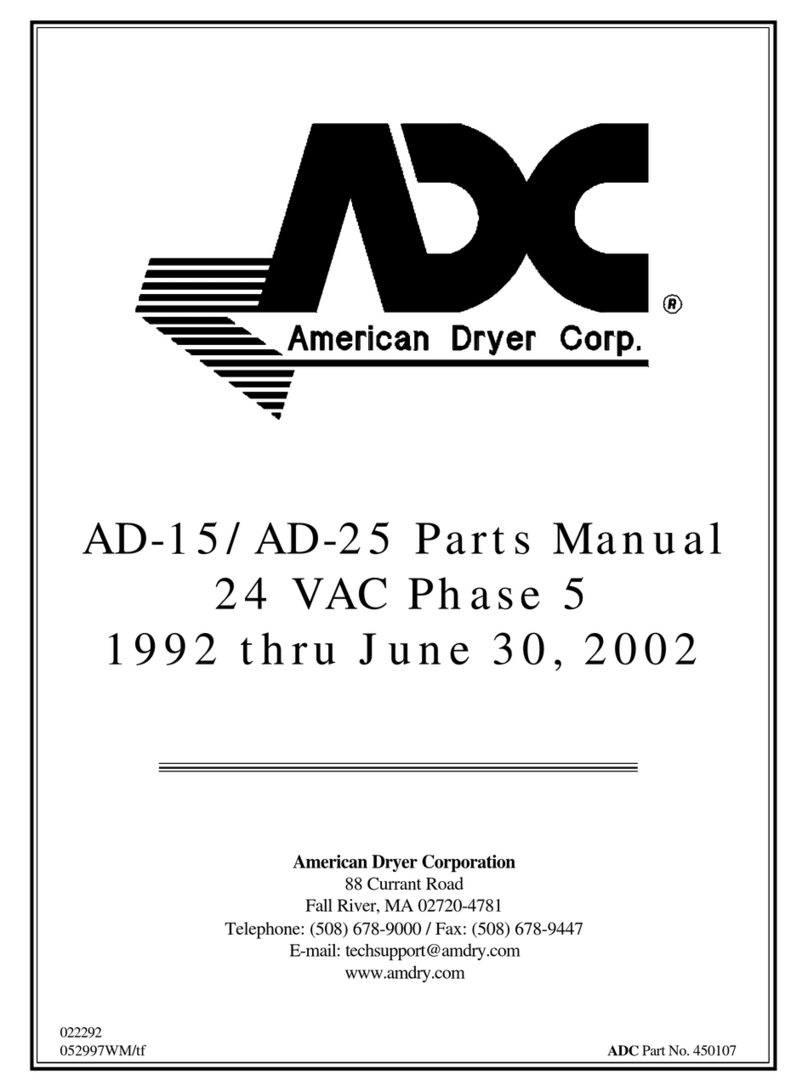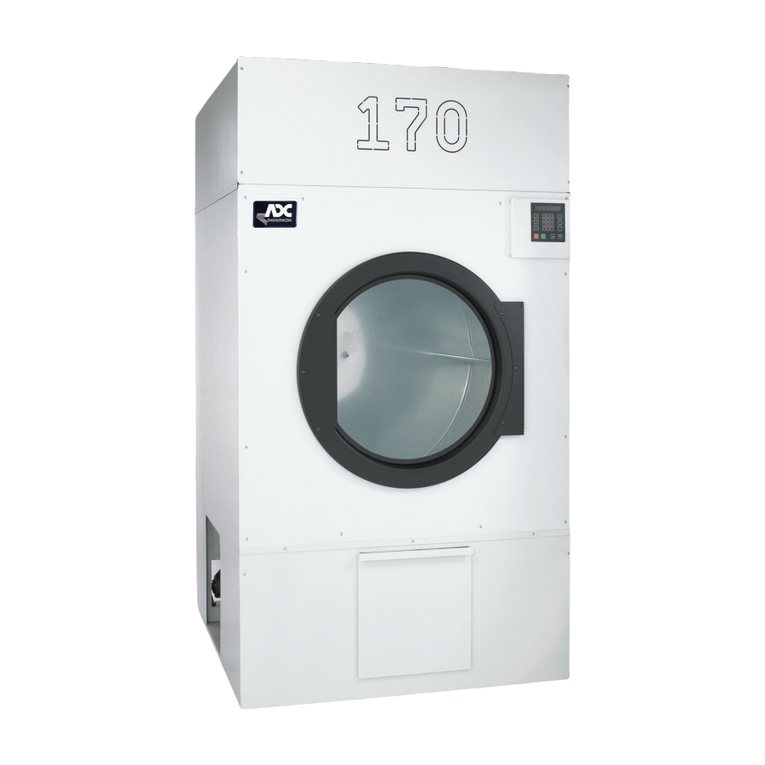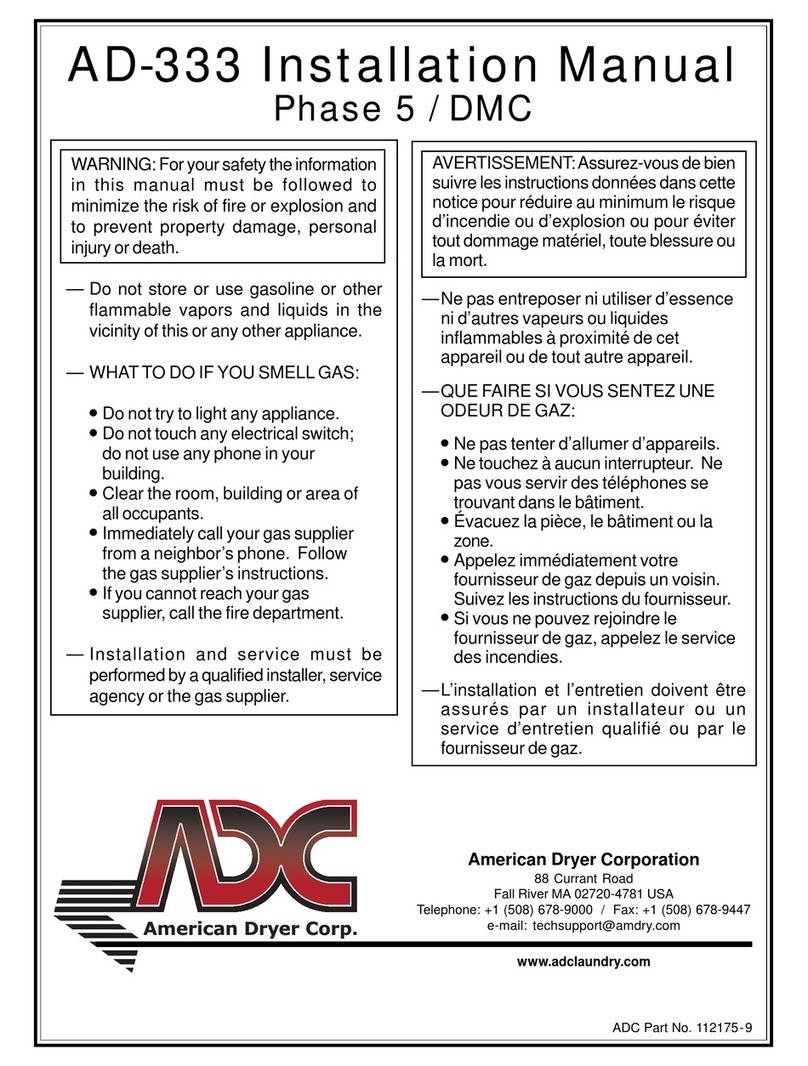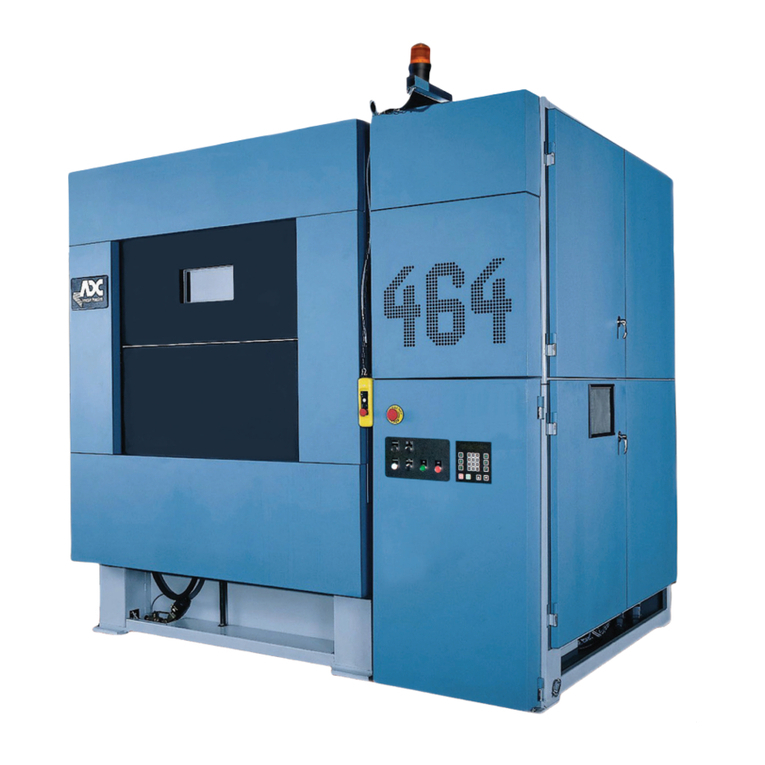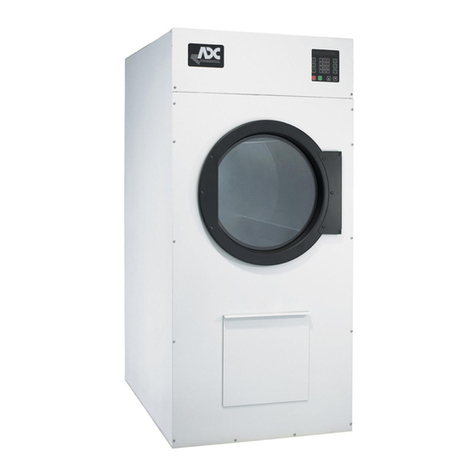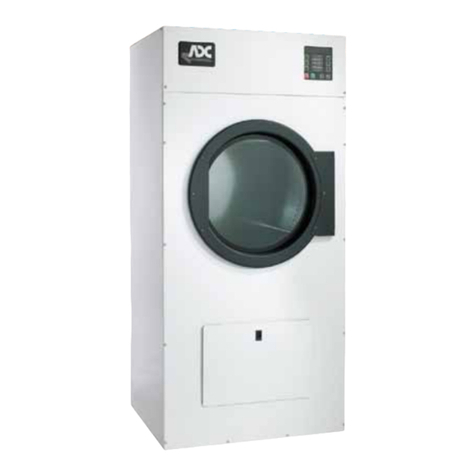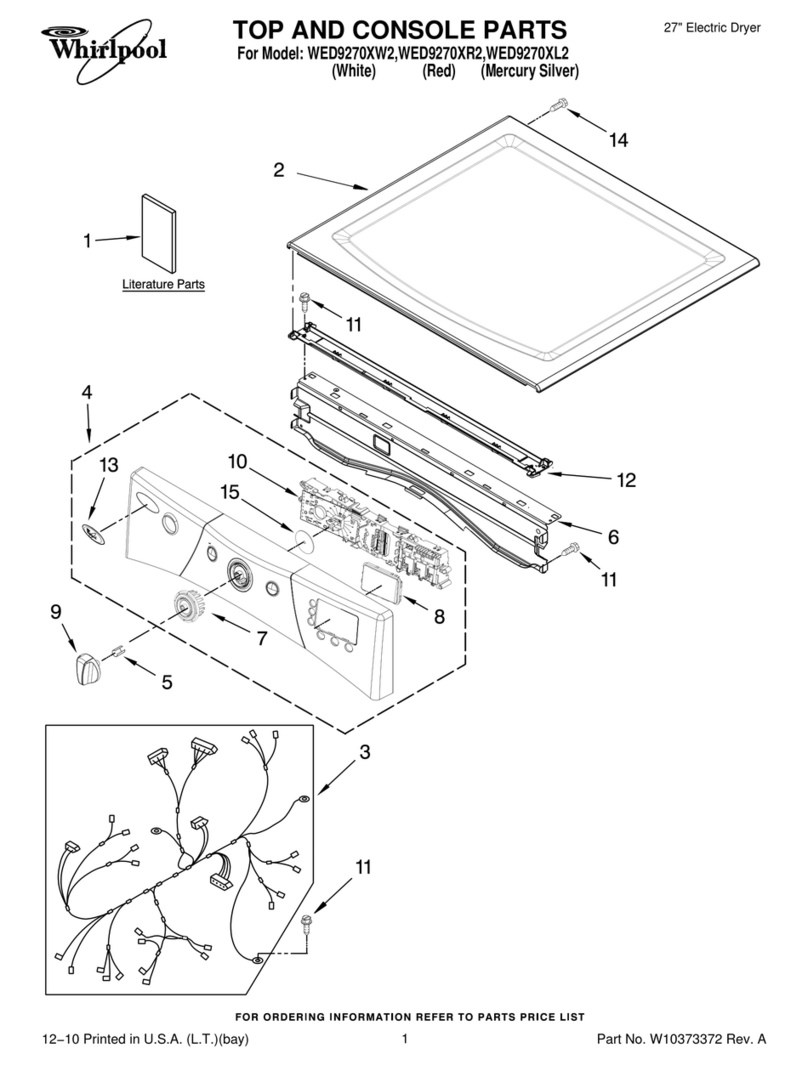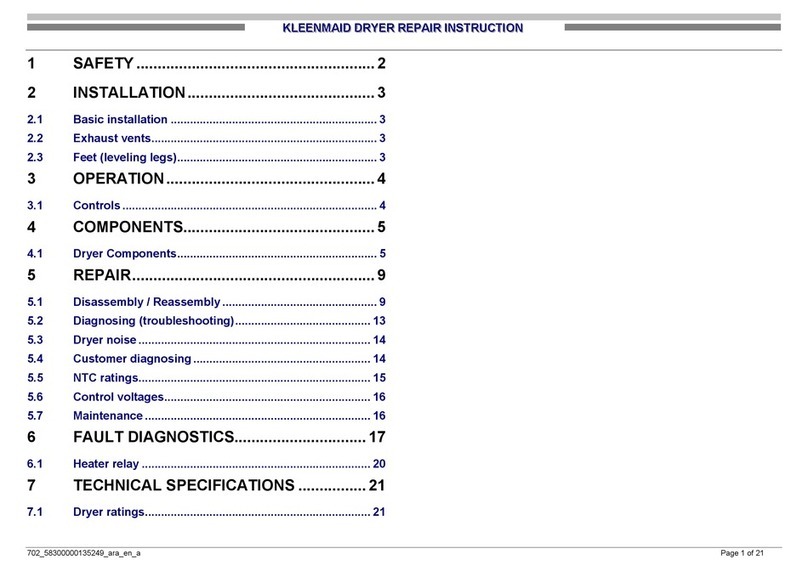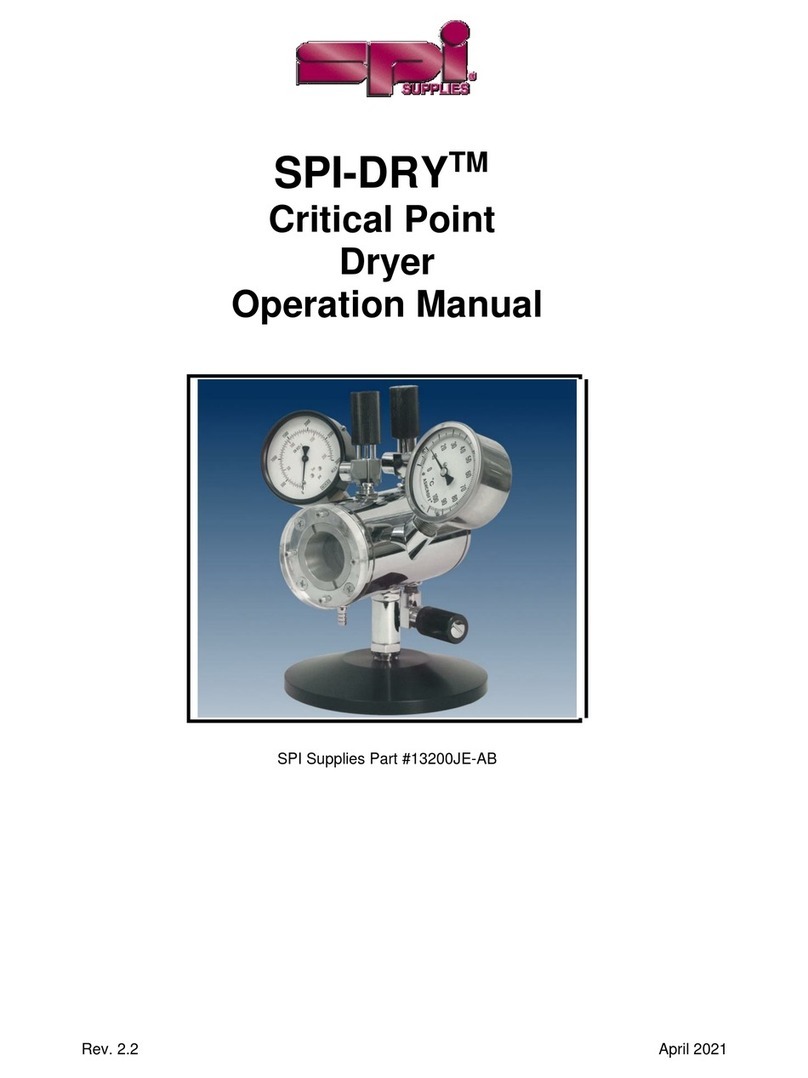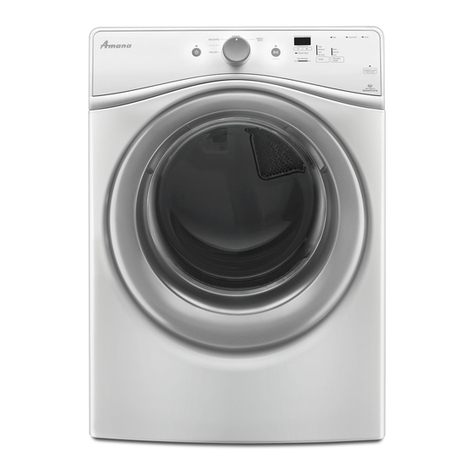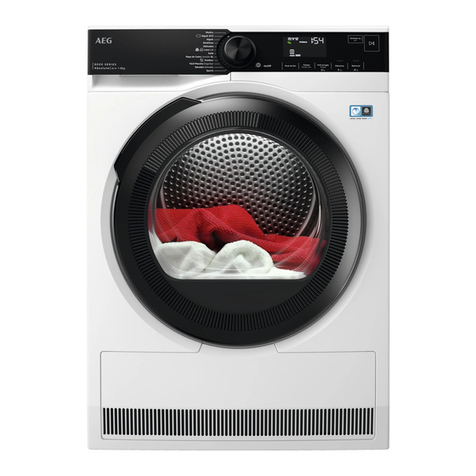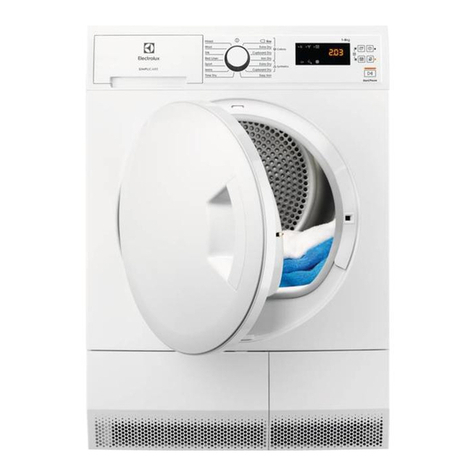
8American Dryer Corp. 113019-7
Fresh Air Supply Requirements ______
This appliance may only be installed in a room that meets the
appropriate ventilation requirements specified in the national
installation regulations.
When the dryer is operating, it draws in room air, heats it,
passes this air through the tumbler, and exhausts it out of the
building. Therefore, the room air must be continually
replenished from the outdoors. If the make-up air is
inadequate, drying time and drying efficiency will be adversely
affected. Ignition problems and sail switch “fluttering” problems
may result, as well as premature motor failure from
overheating. The dryer must be installed with provisions for
adequate combustion and make-up air supply.
Air supply (make-up air) must be given careful consideration
to ensure proper performance of each dryer. Fresh air
ventilation openings shall not be blocked and/or sealed. As
a general rule, an unrestricted air entrance from the outdoors
of 144 inch2(929.03 cm2) is required. (Based on 1 inch2
[6.5 cm2] per 1,000 Btu [252 kcal].)
It is not necessary to have a separate make-up air opening
for each dryer. Common make-up air openings are acceptable.
However, they must be set up in such a manner that the
make-up air is distributed equally to all the dryers.
Exhaust Requirements _______________
IMPORTANT: Dryer should be located where a minimum
amount of exhaust duct will be necessary.
CAUTION: This dryer produces combustible lint and
must be exhausted to the outdoors. Every six months,
inspect the exhaust ducting and remove any lint
buildup.
Exhaust ductwork should be designed and installed by a
qualified professional. Improperly sized ductwork will create
excessive back pressure, which results in slow drying,
increased use of energy, overheating of the dryer, and
shutdown of the burner by the airflow (sail) switches, burner
hi-limits, or tumbler hi-limit thermostats. (Refer to the
illustrations on the following page for details.) The dryer must
be installed with a proper exhaust duct connection to the
outside.
The design of the flue system shall be such that any
condensate formed when operating the appliance from cold
shall either be retained and subsequently re-evaporated or
discharged.
CAUTION: This dryer produces combustible lint and
must be exhausted to the outdoors.
Improperly sized or installed exhaust ductwork can
create a potential fire hazard.
When possible, it is desirable to provide a separate exhaust
air duct for each dryer. The duct should go as directly as
possible to the outside air. Avoid sharp 90° right-angle turns
in ducting; use 30° or 45° angles instead. The radius of the
elbows should preferably be a minimum of 1-1/2 times the
diameter of the duct. To protect the outside end of the duct
from the weather, it may be bent downwards as indicated on
the following page. Leave at least twice the diameter of the
duct as clearance between the duct opening and the nearest
obstruction. If the exhaust duct goes through the roof, it may
be protected from the weather by using a 180° turn to point
the opening down. Allow at least twice the diameter of the
duct as clearance from the nearest obstruction.
Do not use screens, louvers, or caps on the outside opening
of the exhaust ductwork. The ducting should be smooth inside
with no projections from sheet metal screws or other
obstructions, which will collect lint. Additionally, inspection
doors should be installed at strategic points in the exhaust
ductwork for periodic inspection and cleaning.
Inadequate exhaust facilities may cause high temperature limit
switches or airflow switches to shut off the dryers. Do not
disable the switches, which are provided for your safety.
Instead, investigate the exhaust ducting. Any obstruction or
air friction due to numerous elbows/fittings in the ducting will
slow the passage of air through the system with resulting
inefficiency and potential fire hazard.
IMPORTANT: Exhaust back pressure measured by a
manometer at the dryer’s exhaust duct area must be no
less than 0 and must not exceed 0.6 in WC (1.48 mb).
NOTE: When the exhaust ductwork passes through a wall,
ceiling, or roof made of combustible materials, the opening
must be 2-inches (5.08 cm) larger than the duct (all the
way around). The duct must be centered within this
opening.
A = 12-inches (30.48 cm) B = 24-inches (60.96 cm)
EXAMPLE: For a bank of 4 dryers, 2 unrestricted openings
measuring 12-inches by 24-inches (30.48 cm by 60.96 cm)
are acceptable.
To compensate for the use of registers or louvers used over
the openings, this area must be increased by approximately
33%. Make-up air openings should not be located in an area
directly near where exhaust vents exit the building.
Allowances must be made for remote or constricting
passageways or where dryers are located at high altitudes or
predominantly low pressure areas.
IMPORTANT: Make-up air must be free of dry cleaning
solvent fumes. Make-up air that is contaminated by dry
cleaning solvent fumes will result in irreparable damage to
the motors and other dryer components.
NOTE: Component failure due to dry cleaning solvent
fumes will void the warranty.



